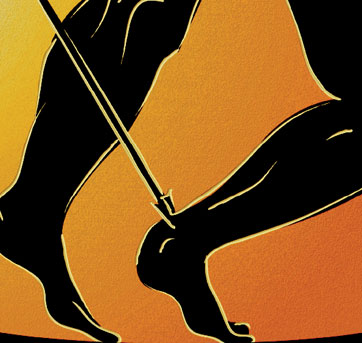Krukn v Krrunk
To dispel the confusion, observe the spelling and the position of the letter N
The bird is spelled with letter Ռ/RR. We know that the word is բնաձայն/onomatopoeic, based on the groaning and moaning sound it makes. Many other languages have similar names, not unlike the English “crane/egret”. See, among others Varuzhan’s Ծեր Կռւնկը/The Old Crane.
----
There is more in the Armatakan but for now this should suffice. We have already spoken about the bird here;
http://hyeforum.com/...20
կռունկ
Armenian
Etymology
From Proto-Indo-European *gerh₂-. Cognates include Ancient Greek γέρανος (geranos), Latin grus and Old English cran (English crane).
Noun
կռունկ (kṙunk)
crane (wading bird)
(lifting device) crane
http://images.nation...757_600x450.jpg

While the other is spelled with the letter Ր/ R, and the N is at the end.
http://www.brianatwo...p-Red-324-2.jpg

There may be a method to this madness. Whereas originally the word for “heel” was կրուկ-ն/kruk-n , in time, for some reason (regional dialects?) the N was juxtaposed. In addition to the below, some say that it means յետ/behind as in the back of the foot. Just like when kamurj becomes karmuj and akanj becomes ankaj, zokanj to zonkaj.
Old Armenian-Alternative forms
կրուկ (kruk)
կրունկ (krunk)
կրունկն (krunkn)
Etymology
The origin is uncertain.
Noun
կրուկն (krukn) (singular genitive կրկան, plural genitive կրկանց, plural կրկունք)
heel
դառնալ ընդ կրուկն, դարձ ընդ կրուկն առնել — to fall or go back, to recede, to go backwards, to retreat
յետս ընդ կրուկն դառնալ, ընդ կրուկն նահանջիլ — to turn back, to retrace one's steps
Declension
declension n-type
singular plural
nominative կրուկն (krukn)կրկունք (krkunkʿ)
genitive կրկան (krkan) կրկանց (krkancʿ)
dative կրկան (krkan) կրկանց (krkancʿ)
accusative կրուկն (krukn) կրկունս (krkuns)
accusative definite զկրուկն (zkrukn) զկրկունս (zkrkuns)
ablative ի կրկանէ (i krkanē) ի կրկանց (i krkancʿ)
instrumental կրկամբ (krkamb) կրկամբք (krkambkʿ)
locative ի կրկան (i krkan) ի կրկունս (i krkuns)
Synonyms
(heel): գարշապար (garšapar)
Derived terms
ընկրկեմ
ընկրկեցուցանեմ ընկրկիչ
կրնկնակոխ
Descendants
Armenian: կրունկ (krunk)
References
“կրուկն” in M. Bedrossian (1879), New Dictionary Armenian-English (Venice: S. Lazarus Armenian Academy)
“կրուկն” in H. Ačaṙean (1926-35), Hayerēn Armatakan Baṙaran (Yerevan: Yerevan State University), 2nd ed., 1971-79
Some say that “գարշապար/garshapar” is a synonym. Maybe. This, in fact means the bottom of the foot/sole, krukn is the back part of the bottom of the foot/heel. Very few of us know or use the word except in a biblical context. At times it is known as “ներբան/nerban”.
http://comps.fotosea...k_~k0579767.jpg
Please be advised that I reluctantly quote these, if only for its linguistics.
Gen.49-[17] Dan shall be a serpent by the way, an adder in the path, that biteth the horse heels, so that his rider shall fall backward.
---
17Դանը թող լինի օձ դարանակալ ճանապարհի վրայ՝ խայթելու համար ձիու գարշապարն ու ցած գցելու հեծեալին նրա:
---
եւ եղիցի դան՝ օձ դարանակալ ՛ի ճանապարհի, հարկանել զգարշապար երիվարի. եւ ընկենուլ զհեծեալն
յետս,
Gen 27- 36... And after that came his brother out,.... Out of his mother's womb, either by his own strength, or by the help of the midwife: and his hand took hold on Esau's heel; to pluck him back and get out first; and this was not casual, but was so ordered in Providence, and had a meaning and mystery in it: and his name was called Jacob; by his parents and others, and that for the above reason, because he took his brother by the heel, which his name has the signification of, and Esau has respect to in Genesis 27:36, and Isaac was threescore years old when she bare them; and so it was twenty years after he had been married to her; so long was his faith tried and exercised about the promised seed that was to spring from him.
Esau and Jacob were twins, born to Isaac and Rebekah. Esau was the first of the twins to be born. He was covered with red hair**, and was called Esau. Some scholars believe that the word Esau means "hairy." Esau became the ancestor of the people of Edom ("red."), which was a country near Israel during ancient times.
Esau was born first. But when his twin brother Jacob was being born, Jacob's hand was holding onto Esau's heel. This was taken as a sign that Jacob wanted to be born first. Later in life, Jacob continued to show that he wanted to be his father's heir.
http://1.bp.blogspot.com/_bBlNFyLU7Ik/TULJF7bZ97I/AAAAAAAABk8/2lDU1l0SbXw/s1600/achilles-heel1.jpgThe ‘Achilles' heel’ is one's weak point, and is named for the only part of the body of the Greek hero Achilles which was vulnerable. The son of King Peleus of Thessaly and the shape-changing nymph Thetis, Achilles is the central character of Homer's great poem, the Iliad.

Կրնկքաշ-Shoe horn
http://www.asia.ru/i...8/Shoe_Horn.jpg
** Red hair? Remember Vahakn?
Նա հուր հեր ունէր,
Բոց ունէր մօրուս,
Եւ աչքունքն էին արեգակունք»։
Edited by Arpa, 19 June 2011 - 06:59 PM.














